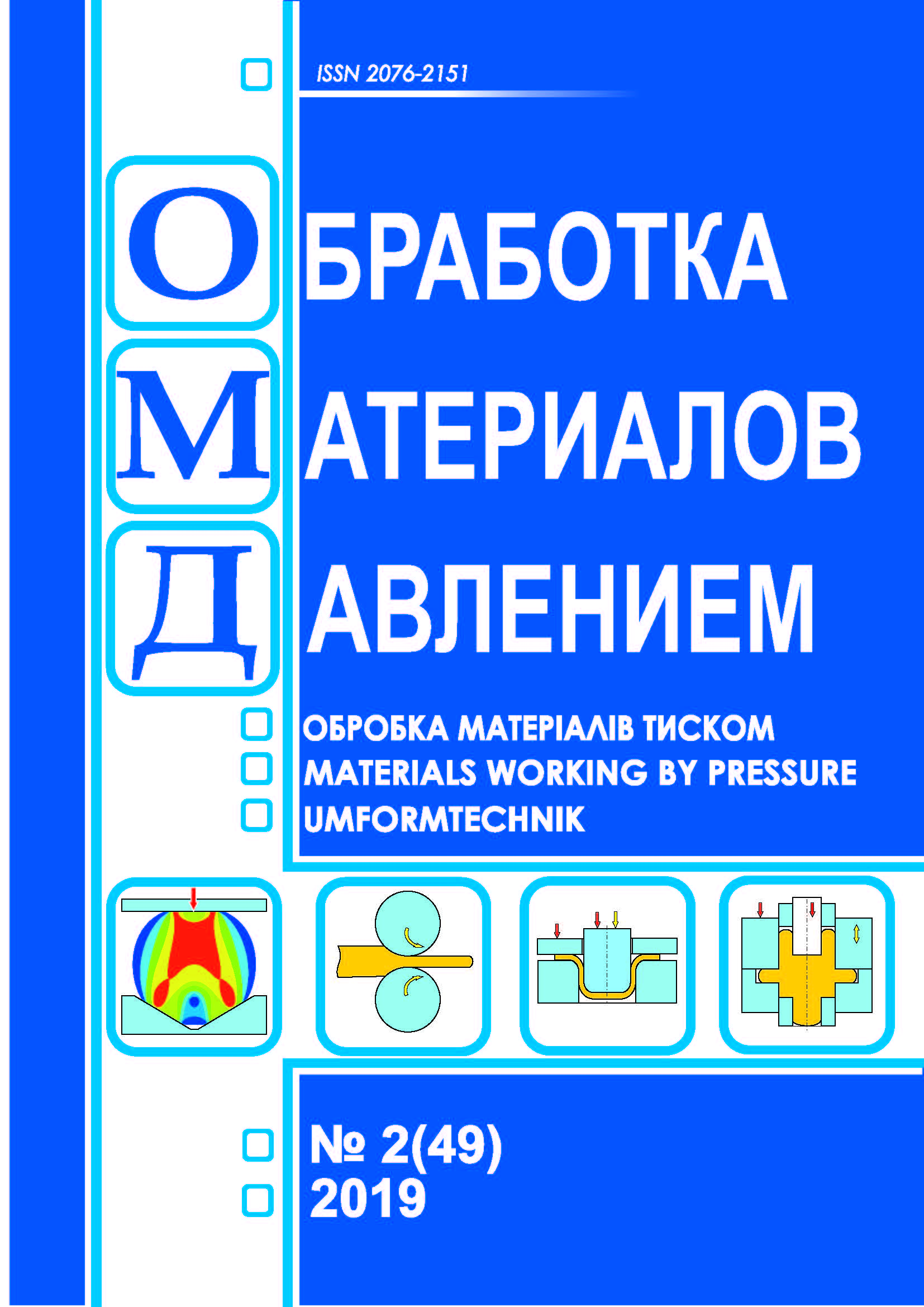Improvement of the stamping process for car valves
DOI:
https://doi.org/10.37142/2076-2151/2019-2(49)82Keywords:
lubrication; valve; press; test; efficiency; strength; temperature; steel; stamp; storage.Abstract
Kargin B. S., Kargin S. B. Improvement of the stamping process for car valves // Material working by pressure. – 2019. – № 2 (49). - Р. 82-86.
The results of a study to improve the process of stamping automobile valves due to water-graphite process lubricant "V-2" are presented.
The need for development was caused by the fact that the Ukrinol-7 graphite oil currently used in hot stamping of valves is quite expensive, contains scarce cottonseed oil, and most importantly, it is environmentally hazardous, because when used, the content of benzopyrene in the air exceeds the MPC by three times, and the nitride content exceeds the MPC by two.
The composition of the developed water-graphite grease “V-2” and the results of its tests in comparison with the grease “Ukrinol 7” during stamping of automobile valves on an industrial stamp are presented. Valve material steel 40X9C2. The billet was heated in the furnace to t = 1150 0С.
Evaluation of the effectiveness of lubricants was carried out by fixing the punching force, buoyancy force and the behavior of the lubricants during the test. So, the valve stamping force in the first transition was P = 890–900 kN, and the force for forging the forgings from the stamp is 10 % of the stamping force.It has been established that the effectiveness of the used Ukrinol-7 oil-graphite grease and the developed V-2 water-graphite grease is the same, but from an economic and environmental point of view, the V-2 grease is more preferable than Ukrinol-7. At the same time, the developed V-2 lubricant used graphite, crushed in a hydrodynamic unit and consisting of 50% of the 1–5 μm fraction and 50% of the 100–200 μm fraction.
References
Kargin B.S. Improvement of forging and stamping production through the use of effective technological lubricants. World of Engineering and Technology. 2004, 2, pp. 28–32. (in Russian).
Medved R.A. On the benzaniren pollution of the forge air with various lubricants during stamping. Forging and Stamping Production. 1982, 5, pp. 38–50. (in Russian).
Grudev A.P., Zilber Yu.V., Bilik V.B. Friction and lubricants in metal forming. Handbook. Moscow: Metallurgy. 1988, 312 p. (in Russian).
Petrov A.N. Comprehensive study of water–based colloidal graphite lubricants. Forging and Stamping Production. Material Working by Pressure. 2011, 10, pp. 18–20. (in Russian).
Petrov A.N. Research of oil–based colloidal graphite lubricants. Forging and Stamping Production. Material Working by Pressure. 2012, 4, pp. 20–22. (in Russian).
Petrov A.N. The choice of optimal colloid–graphite lubricants for dies of automated hot–stamping lines. Forging and Stamping Production. Material Working by Pressure. 2012, 6, pp. 12–16. (in Russian).
Pat. 1660330 USSR. Graphite processing method. Diamantopulo K.K., Kargin B.S., Nemchin A.N., Pauk V.I. 1988.

